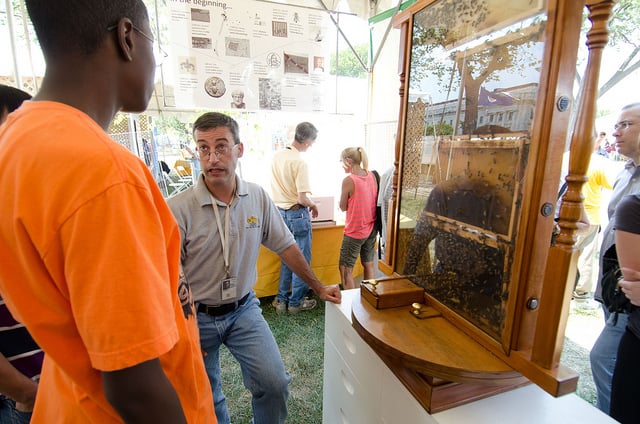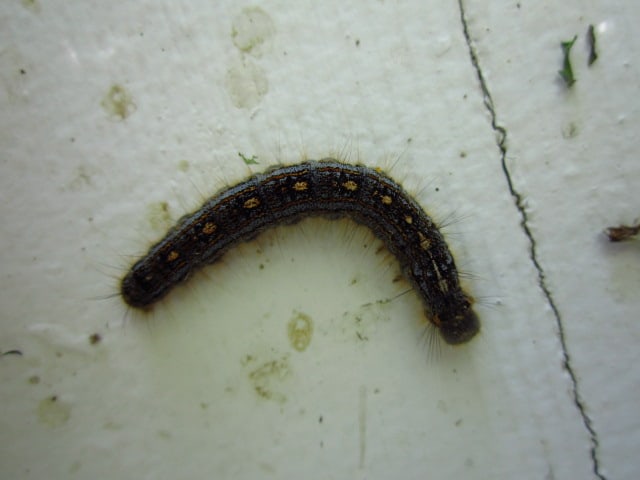The Smithsonian Folklife Festival is an annual festival held on the National Mall in Washington, D.C. that celebrates cultural diversity and traditions. The USDA Bee Research Lab was asked to participate this year as part of the theme “Campus and Community”. The festival commemorated the 150th anniversary of USDA and land-grant universities. Abraham Lincoln signed the Morill Act in 1862 which, in part, initiated research partnerships between USDA and public universities (not unlike the Bee Informed Partnership!) A group of us from BIP were lucky enough to be able to participate in the festival on June 29th: myself, Karen Rennich, Heather Eversole and Jennie Stitzinger.…
State of Beekeeping in Northern CA:
I have been living in Northern CA for just over a year now and from what I’ve been told the weather in the past year has been atypical. Last spring and early summer was late and unusually wet which led to one of the best star thistle crops in years. Because of the rain the star thistle was able to out compete the grasshoppers and produce more than enough flowers to keep the bees busy. Most beekeepers in the area were able to make a surplus of honey and I think the abundance of available forage during the summer months may have helped curb pests…
Tropilaelaps Mites
Among the many diseases and pests that the APHIS National Honey Bee Survey samples are analyzed for is the exotic parasite, the Tropilaelaps mite. These mites are native to tropical Asia and are a serious threat to the honey bee. While they naturally use the giant honey bee (Apis dorsata) as their host, Tropilaelaps mites have easily transferred to the European honey bee and other Asian honey bee species; however fortunately for us, for the time being, they are not known to be found in the US. Pictured here, the mites are reddish brown in a shade that is very similar to that of Varroa…
Sorting Insect Specimens
In previous blogs I have talked about catching, pinning, labeling and storing insects. I am going to talk about how I process the samples to conserve space. This process is simple but takes time. I started out with a bug case with a few different series of bees and other insects. There is an image of the case I started with above. I go through the case and write down all the location labels and how many insects are in each series. If there are specimens in the series that have plant information I will write that down as well. One such example would be…
It’s Raining Frass!
In early June I experienced an outbreak of forest tent caterpillars (FTC), Malacosoma disstria, while sampling at an apiary in west-central Minnesota. Not only were the hive lids covered with frass, the technical term for insect feces, but the caterpillars themselves were falling on both the lids and my shoulders as I worked. According to the Minnesota Department of Natural Resources, FTC has been in the outbreak stage in west-central counties of Minnesota for several years, potentially numbering from one to four million caterpillars per acre. In between outbreaks FTC can be nearly undetectable. The larval caterpillars emerge from over-wintered egg masses around mid-May and…
Observing retinue behavior.
On Thursday, Mike and I attempted to observe retinue behavior. So what is retinue behavior? Retinue behavior is the action of worker bees towards the queen including antennating, grooming and trophallaxis. A substance produced by the mandibular glands of the queen is thought to be the trigger for this retinue behavior. Antennating is the tapping movement of the antennae displayed by the bees in the presence of a queen. Grooming consists of worker bees cleaning and managing the appearance of the queen. Trophallaxis is the transfer of food or communication with the queen. To observe retinue behavior we followed the protocol complied by Dr. Yusuf…
Cycle of a Northern CA Bee Breeder
Most commercial beekeepers will tell you that beekeeping has changed dramatically in the last 30 years coinciding with the arrival of Varroa mites in the late 80’s. It seems as though things have been in a constant state of change since then as beekeepers and scientists scramble to understand the complexities of Varroa, viruses, Nosema ceranae, pesticides and how they interact with bees, both, alone and in combination. The days of setting bees down in a single location and letting them go until it was time to extract honey are far gone. Now, commercial beekeepers start to fall behind if they are not making their…
Smoker Plug
It has been really busy out in the Midwest recently. Liz and I visited nine beekeepers in North Dakota the past week. Once I catch up with the work, I will write more about the experience. But for now, here is something on smokers. Having your smoker puff billows of smoke out of your truck bed can prompt concerned drivers to warn you your truck is on fire. To prevent your smoker from getting you pulled over, you can either put it in a metal box or you can use something to plug the hole. To plug the hole you can use something like grass…
Wormlion (Vermilionidae)
On a recent trip I stumbled onto pits in sandy soil. The first thing that came to mind was Antlions which congregate in dry soil. They sit in the bottom of the pits and wait for unsuspecting prey to fall in. Upon further investigation I found that there were small worm-like larvae in the bottom of these pits. They were somewhat strange looking having no pronounced prolegs or large sclerotinized mandibles to grab prey with. So once I figured out that these were not Antlions I figured I’d throw in some prey to see what happened. When I did, I was surprised. The larvae grabbed…
The Ropes of Research – Learning My Way Around a New World
When I think back to when I first started as an apiary technician at the Pennsylvania Department of Agriculture the first thing that comes to my mind is how completely clueless I was when it came to beekeeping. I also had a lot to learn about scientific research. The more I learned the more I realized how little I actually knew. An answer to one question almost always leads to another question... I will never forget my first day in the field at a yard just outside the small town of Lewisburg, Pennsylvania. Dennis vanEngelsdorp and I met Jeff Pettis and Nathan Rice (USDA Bee…

